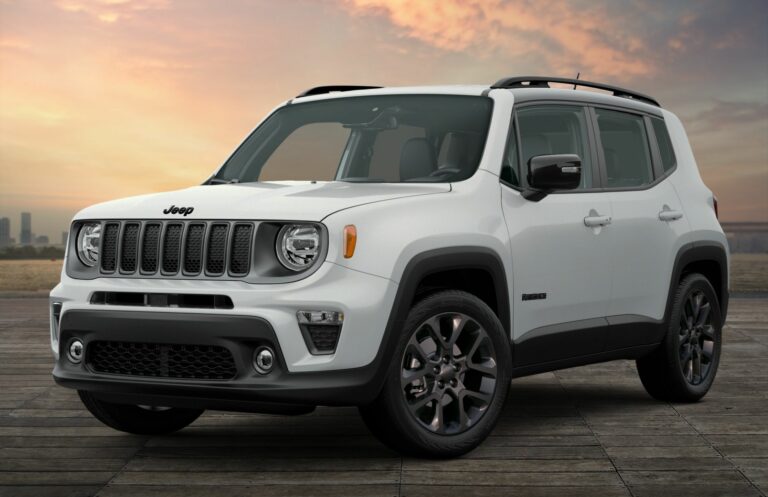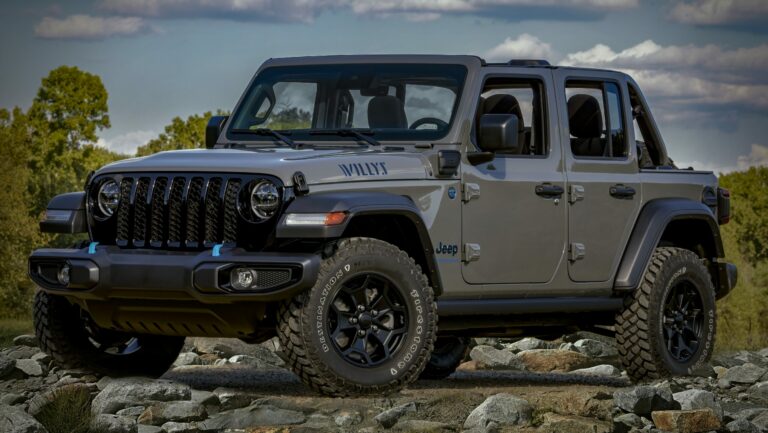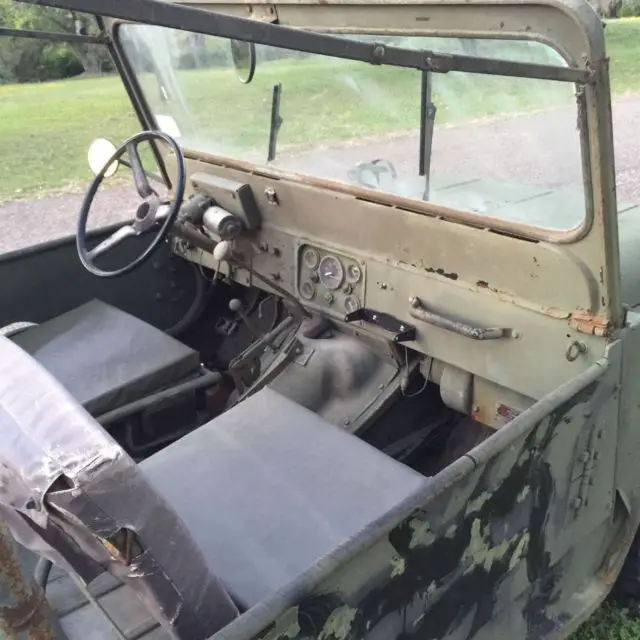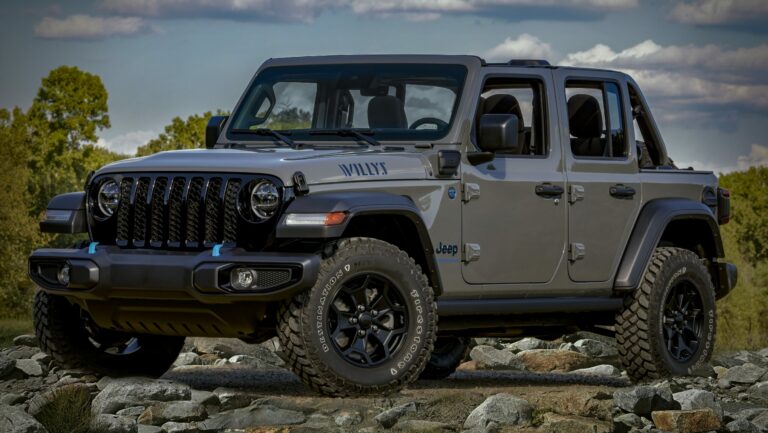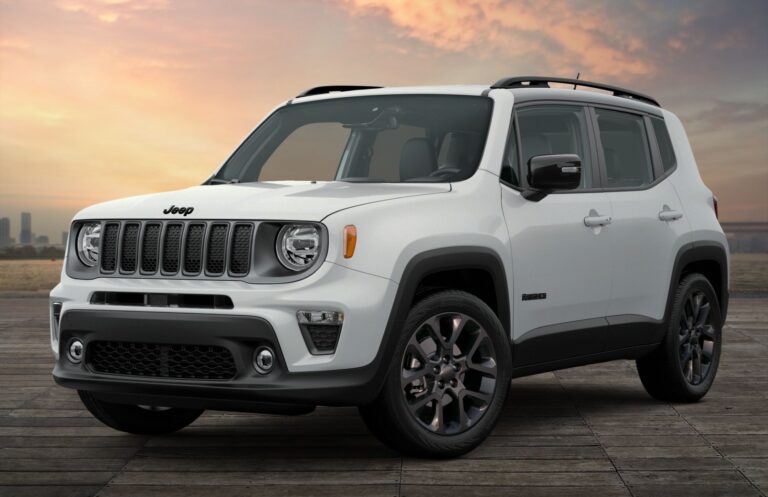1999 Jeep Grand Cherokee Engine For Sale: A Comprehensive Buyer’s Guide
1999 Jeep Grand Cherokee Engine For Sale: A Comprehensive Buyer’s Guide /jeeps.truckstrend.com
The 1999 Jeep Grand Cherokee, often known by its chassis code WJ, holds a special place in the hearts of SUV enthusiasts. Marking a significant evolution from its ZJ predecessor, the WJ combined rugged off-road capability with improved on-road refinement and comfort. For many owners, this model represents the perfect balance of utility, style, and heritage. However, as these beloved vehicles approach or exceed a quarter-century in age, the original engine, like any mechanical component, can reach the end of its serviceable life. When faced with a major engine failure – be it a catastrophic knock, persistent oil consumption, or a complete seize – finding a reliable replacement engine for your 1999 Jeep Grand Cherokee becomes not just a necessity, but a vital step in keeping your cherished vehicle on the road. This comprehensive guide will navigate you through everything you need to know about purchasing a 1999 Jeep Grand Cherokee engine, from understanding your options to making a smart, informed decision.
Understanding the 1999 Jeep Grand Cherokee Engine Options
1999 Jeep Grand Cherokee Engine For Sale: A Comprehensive Buyer’s Guide
Before you embark on the hunt for a replacement engine, it’s crucial to understand the powerplants originally offered in the 1999 WJ Grand Cherokee. Knowing exactly which engine your vehicle came with, or which one you intend to install, is the first and most critical step in ensuring compatibility.
-
4.0L Inline-Six (I6) PowerTech Engine: This legendary engine, often revered for its bulletproof reliability and straightforward design, was a carryover from previous Jeep models. Producing around 190 horsepower and 225 lb-ft of torque, the 4.0L I6 is known for its longevity, provided it’s properly maintained. It’s an excellent choice for those prioritizing durability and ease of maintenance, and it remains widely available in the used and remanufactured markets.
-
4.7L V8 PowerTech Engine: The 1999 WJ also introduced a brand-new V8 engine, the 4.7L PowerTech, which offered a significant boost in performance over the older 5.2L and 5.9L V8s from the ZJ generation. With approximately 235 horsepower and 295 lb-ft of torque, this engine provided a more refined and powerful driving experience. While generally reliable, the 4.7L V8 is known for certain common issues, such as oil sludge buildup (if maintenance is neglected) and exhaust manifold cracks. Replacement engines for the 4.7L are also readily available, often with improvements to address these known issues in remanufactured units.

It is imperative to verify which engine your specific 1999 Grand Cherokee possesses. This can usually be done by checking the VIN (Vehicle Identification Number), consulting your owner’s manual, or simply looking under the hood for engine size identification.
Why Buy a Replacement Engine? Common Scenarios
The decision to replace an engine is a significant one, often driven by various factors:
- Catastrophic Failure: The most common reason. This includes issues like a thrown rod, seized crankshaft, severe overheating leading to warped heads, or irreparable internal damage.
- Excessive Wear and Tear: High mileage engines often suffer from low compression, excessive oil consumption, persistent knocking noises, or chronic oil leaks that become uneconomical to repair.
- Cost-Effectiveness: For many owners, the cost of replacing an engine is significantly less than purchasing a new or newer used vehicle, especially if the rest of the Grand Cherokee is in good condition.
- Restoration Projects: Enthusiasts restoring a classic 1999 WJ might opt for a fresh engine to ensure decades more of reliable service.
- Upgrading: While less common for the 1999 model, some may seek to swap a 4.0L for a 4.7L (though this involves significant modifications beyond just the engine).


Types of Replacement Engines Available
When searching for a 1999 Jeep Grand Cherokee engine for sale, you’ll generally encounter three main categories, each with its own advantages and disadvantages:
-
Used Engines (Salvage/Junkyard):
- Pros: This is typically the most budget-friendly option. Used engines are pulled from donor vehicles and can be found at salvage yards or through online marketplaces.
- Cons: The biggest drawback is the unknown history. You might not know the exact mileage, maintenance record, or the conditions under which the donor vehicle was operated or wrecked. This carries the highest risk of purchasing a "lemon."
- Tips: If considering a used engine, always inquire about a compression test, look for signs of sludge, and ask for a short warranty (even 30-90 days provides some peace of mind). Opt for lower mileage if possible.
-
Remanufactured/Rebuilt Engines:
- Pros: These engines offer an excellent balance of cost and reliability. A remanufactured engine has been completely disassembled, inspected, cleaned, and had all worn or damaged parts replaced with new or reconditioned components (e.g., new pistons, rings, bearings, camshafts, valvetrain components). They often come with a substantial warranty (1-3 years or more) and can even include improvements to common factory flaws.
- Cons: They are more expensive than used engines.
- Details: Reputable remanufacturers like Jasper Engines are well-known for their quality control and stand behind their products. This option is often the safest bet for long-term reliability.
-
New Crate Engines:
- Pros: A brand-new engine, untouched and pristine, with a full factory warranty.
- Cons: Extremely expensive, and often not available for vehicles as old as the 1999 Grand Cherokee. For specific older models, new crate engines are rare and usually come from specialty performance builders rather than the original manufacturer. This is likely not a viable option for a standard replacement.
Key Considerations When Purchasing
Making an informed decision requires careful consideration of several factors beyond just the price tag:
- Engine Compatibility (VIN Verification): Always verify that the engine is a direct match for your vehicle’s year, model, and original engine type. Provide your VIN to the seller to ensure compatibility.
- Mileage: For used engines, lower mileage is always preferable, as it generally correlates with less wear and tear.
- Warranty: This is paramount, especially for used and remanufactured engines. Understand what the warranty covers, its duration, and the claims process. A good warranty can save you thousands.
- Seller Reputation: Purchase from reputable salvage yards, engine suppliers, or remanufacturers with positive reviews and a track record of good customer service.
- Shipping Costs: Engines are heavy! Shipping costs can significantly add to the total price, especially for long distances. Factor this into your budget.
- Completeness of the Engine: Is it a "long block" (block, heads, crankshaft, camshaft) or a "complete engine" (including intake manifold, exhaust manifolds, sensors, accessories like alternator, power steering pump, etc.)? A long block is cheaper upfront but requires transferring more components from your old engine.
- Core Charge: Most remanufactured and many used engine sales include a "core charge." This is a refundable deposit that you get back when you return your old, rebuildable engine core to the seller. Be aware of this cost and the return policy.
- Pre-Purchase Inspection: If buying a used engine locally, and it’s feasible, try to inspect it visually for obvious damage, cracks, or signs of severe neglect.
The Buying Process: A Step-by-Step Guide
- Thorough Diagnosis: Confirm that your current engine is indeed beyond repair and that a replacement is the most cost-effective solution. Get a professional opinion.
- Identify Your Engine: Determine if you need a 4.0L I6 or a 4.7L V8, and note your vehicle’s VIN.
- Research Suppliers: Look for reputable online engine retailers (e.g., specialized engine rebuilders, large auto parts networks) and local salvage yards or engine shops.
- Gather Quotes and Compare: Contact multiple sellers. Get detailed quotes that include the engine price, shipping, core charge, and warranty information.
- Verify Compatibility: Provide your VIN to each potential seller and have them confirm the engine’s compatibility.
- Ask Detailed Questions: For used engines, inquire about mileage, any tests performed (e.g., compression, leak-down), and the condition of included accessories. For remanufactured engines, ask about the rebuilding process, specific improvements, and warranty specifics.
- Review Warranty and Return Policy: Read the fine print carefully. Understand what voids the warranty and the procedure for returns or claims.
- Arrange Purchase and Shipping: Once you’ve chosen a supplier, finalize the purchase. Ensure you receive tracking information for shipping.
- Prepare for Core Return: If there’s a core charge, ensure you understand the packaging and shipping requirements for returning your old engine.
Installation and Post-Installation Tips
- Professional Installation: While DIY is possible for experienced mechanics, engine replacement is complex and best left to a professional shop. This also typically preserves your engine’s warranty.
- Replace Peripheral Components: It’s highly recommended to replace key peripheral components during engine installation. These include the water pump, thermostat, spark plugs, ignition coils (for 4.7L), various sensors (crankshaft, camshaft, oxygen), engine mounts, and all hoses and belts. This prevents having to remove components later for a minor part failure.
- Fluid Flush and Fill: Ensure all fluids (engine oil, coolant, power steering fluid, transmission fluid) are fresh and at the correct levels.
- Break-in Procedure: For remanufactured engines, follow the manufacturer’s specific break-in procedure. This usually involves varying RPMs for the first few hundred miles and an early oil change.
Challenges and Solutions
- Finding the "Right" Engine: The market for older vehicle engines can be inconsistent.
- Solution: Be patient, expand your search radius, and consider reputable remanufacturers as a reliable alternative to used.
- Shipping Damage: Engines are heavy and can be damaged in transit.
- Solution: Inspect the engine immediately upon arrival before signing off on delivery. Document any damage with photos and contact the seller and shipping company.
- Engine "D.O.A." (Dead on Arrival) or Early Failure: Despite best efforts, a faulty engine can sometimes slip through.
- Solution: This is where a strong warranty is invaluable. Follow the warranty claim procedure precisely.
Practical Advice and Actionable Insights
- Don’t Rush: Take your time to research and compare options. A rushed decision can lead to costly mistakes.
- Get Everything in Writing: Ensure all promises, warranty details, and core charge agreements are clearly documented.
- Prioritize Warranty: A good warranty is your best protection against unforeseen issues.
- Calculate Total Cost: Factor in the engine price, shipping, core charge, potential peripheral parts, and installation labor.
- Trust Your Gut: If a deal seems too good to be true, it probably is. Stick with reputable sellers.
1999 Jeep Grand Cherokee Engine Estimated Price Table
Please note that these are estimated price ranges and can vary significantly based on the seller, the engine’s exact condition, mileage, included components, current market demand, and geographical location. Always request a detailed, itemized quote.
| Engine Type | Condition/Notes | Estimated Price Range (USD) | Typical Warranty | Core Charge (Est.) |
|---|---|---|---|---|
| 4.0L I6 (Used) | High Mileage (150k+), tested, long block | $600 – $1,200 | 30-90 days | $200 – $350 |
| 4.0L I6 (Used) | Lower Mileage (under 100k), tested, long block | $1,000 – $2,000 | 90 days – 6 months | $200 – $350 |
| 4.0L I6 (Reman.) | Fully rebuilt, new components, long block | $2,500 – $4,000+ | 1-3 years / unlimited miles | $300 – $500 |
| 4.7L V8 (Used) | High Mileage (150k+), tested, long block | $800 – $1,500 | 30-90 days | $200 – $350 |
| 4.7L V8 (Used) | Lower Mileage (under 100k), tested, long block | $1,200 – $2,500 | 90 days – 6 months | $200 – $350 |
| 4.7L V8 (Reman.) | Fully rebuilt, new components, long block (often improved) | $3,000 – $5,000+ | 1-3 years / unlimited miles | $300 – $500 |
| Shipping Costs | Varies by distance, weight, and freight carrier | $200 – $600+ | N/A | N/A |
| Installation Labor | Professional shop labor (does not include parts) | $800 – $1,800+ | Varies by shop (usually 90 days) | N/A |
Note: "Long block" typically means the engine block with heads, crankshaft, and camshaft. Accessories like the intake manifold, exhaust manifolds, alternator, power steering pump, AC compressor, etc., are usually transferred from your old engine or purchased separately.
Frequently Asked Questions (FAQ)
Q1: What engines came in the 1999 Jeep Grand Cherokee?
A1: The 1999 Jeep Grand Cherokee (WJ) was offered with two engine options: the reliable 4.0L Inline-Six (I6) and the more powerful 4.7L V8 PowerTech engine.
Q2: How do I know which engine my 1999 Grand Cherokee has?
A2: You can usually find this information on a sticker under the hood, in your owner’s manual, or by decoding your vehicle’s VIN (Vehicle Identification Number) online or through a dealership. A visual inspection of the engine will also reveal if it’s an inline-six or a V8.
Q3: Is it better to buy a used or a remanufactured engine?
A3: This depends on your budget and risk tolerance. Used engines are cheaper but come with higher risk due to unknown history. Remanufactured engines are more expensive but offer significantly better reliability and come with a substantial warranty, making them the preferred choice for long-term peace of mind.
Q4: What is a "core charge" and why do I pay it?
A4: A core charge is a refundable deposit paid at the time of purchase. It’s designed to encourage you to return your old, "core" engine (the damaged one being replaced) to the seller. The seller then rebuilds or reuses components from your old engine, reducing waste and allowing for more remanufactured units. You get the deposit back once your old core is received and deemed rebuildable.
Q5: How long does an engine replacement typically take?
A5: For a professional mechanic, an engine replacement typically takes 3-5 full business days, though this can vary based on shop workload, parts availability, and any unforeseen complications. DIY replacement will take considerably longer.
Q6: What else should I replace when getting a new engine?
A6: It’s highly recommended to replace the water pump, thermostat, spark plugs, ignition coils (for 4.7L), all engine sensors (crankshaft, camshaft, oxygen, etc.), engine mounts, and all hoses and belts. This "while you’re in there" approach prevents needing to open up the engine bay again shortly after for minor component failures.
Q7: Can I install the engine myself?
A7: Engine replacement is a complex job requiring specialized tools, significant mechanical knowledge, and often a lift or engine hoist. While possible for experienced DIY mechanics, it’s generally recommended for professional installation, especially to ensure warranty compliance.
Q8: What kind of warranty should I look for?
A8: For used engines, look for at least a 30 to 90-day warranty. For remanufactured engines, aim for a minimum of a 1-year warranty, with 2-3 year warranties being common and highly desirable. Always understand what the warranty covers and what can void it.
Q9: Are Jasper engines worth the extra cost?
A9: Many mechanics and consumers believe Jasper Engines are worth the extra cost due to their rigorous remanufacturing process, quality control, and strong warranty. They often address common factory flaws, leading to a more reliable replacement engine.
Q10: How do I verify the mileage on a used engine?
A10: For used engines, ask the seller for documentation from the donor vehicle (if available), such as a VIN or mileage reading. Reputable salvage yards will often list the mileage. You can also visually inspect components for wear that might indicate high mileage, though this isn’t foolproof.
Conclusion
The 1999 Jeep Grand Cherokee remains a beloved and capable vehicle. When its heart – the engine – gives out, it doesn’t have to signal the end of your adventures together. By carefully researching your options, understanding the different types of replacement engines available, and making an informed decision based on factors like warranty, seller reputation, and compatibility, you can successfully find a new lease on life for your WJ. While the process requires diligence and an upfront investment, keeping a classic Grand Cherokee on the road with a healthy, reliable engine is a rewarding endeavor that ensures many more years of driving enjoyment.



